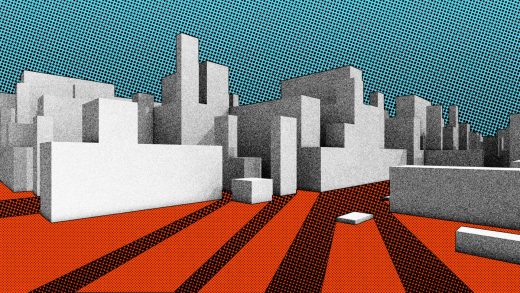American cities are reviving–but leaving the poor behind
According to the headlines, Pittsburgh is hip right now.
“Built on steel, Pittsburgh now thrives on culture,” a New York Times article from 2017 reads. Forbes declared the city “the new cool” in 2016. Like its post-industrial sister cities–Baltimore, Cleveland, Detroit, St. Louis–Pittsburgh is beginning to crawl its way out of decades of disinvestment and economic decline.
But the gushing headlines mask the complexities of these cities’ gradual ascents. In a new book, The Divided City: Poverty and Prosperity in Urban America, historian and urban policy and planning expert Alan Mallach picks apart the slow progress in the U.S.’s post-industrial (or “legacy”) cities, and finds that by and large, it’s leaving a large portion, mainly low-income and nonwhite, of the population behind.
Look more closely at the enthusiasm around Pittsburgh, for instance, and you find that it’s clustered in a handful of neighborhoods. Lawrenceville, which borders the Allegheny River north of downtown, boasts a beer store with over 800 bottles and cans, artists’ studios, and multiple bike shops. On its main drag, Butler Street, outdoor tables host groups of young people late into the night, but just under 20 years ago, the neighborhood was quiet, shrinking, and mostly home to working-class people over the age of 65.
In a way, Mallach says, Lawrenceville is something of a model site for gentrification, which is a term often applied to the type of transition through which it’s moving. It’s near to a key “anchor” institution: An outpost of the city’s hospital system, the University of Pittsburgh Medical Center, is close by. The neighborhood’s layout is largely undisturbed from earlier decades, and features a highly walkable mix of commercial corridors and residential streets. And most significantly, it’s a historically white neighborhood.
While reviving areas in American legacy cities are those that tend to draw the spotlight, their inverse–pockets of entrenched, racialized poverty–are being left behind. As new residents, amenities, and resources flow to a handful of “up-and-coming” neighborhoods, others are struggling more than ever, and the gap between the two is growing. Even though the reviving neighborhoods may draw the headlines, it’s those neighborhoods that are struggling that cities should be paying the most attention to as they transition. In his book, Mallach compellingly makes the case as to why.
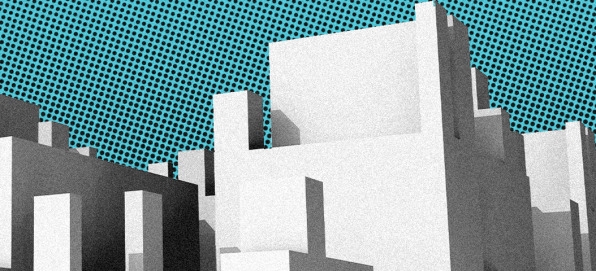
An uneven revival
The popular narrative of gentrification goes something like this: In cities, young, affluent college grads move into lower-income neighborhoods of color, and before long, coffee shops and hip boutiques start to replace older stores. It’s not long before the real estate developers and agents follow and the rents skyrocket. This narrative is largely derived from cities like New York, D.C., and Seattle, where population growth–especially due to an influx of wealthy people–is far outstripping the housing supply, and essentially all neighborhoods are changing and becoming more expensive.
But cities like Pittsburgh and Baltimore, which are the focus of Mallach’s book, have only recently begun to welcome new residents. These new people were likely drawn, Mallach says, by jobs at the educational and medical institutions like the University of Pittsburgh Medical Center and Johns Hopkins in Baltimore that have slowly but surely replaced the manufacturing industries that anchored the cities in the past. Gentrification in these places is more gentle, and revolves around not displacing residents (because there were so few to begin with), but more around filling in gaps.
The movement of young people into Lawrenceville, for instance, brought a swath of new amenities and investment. While some, like a yoga studio, might prompt older residents to roll their eyes, Mallach writes, others, like better grocery stores and improved transit, offer fairly universal benefits. It’s still affordable, because Pittsburgh is still affordable, and Mallach argues that if Lawrenceville hadn’t experienced that initial influx of young residents, it may very well have declined: “The reality,” he writes, “is that today most neighborhoods that don’t survive, go downhill.”
The latter situation, Mallach says, is something that low-income, majority-black neighborhoods in U.S. legacy cities are all too familiar with. And even as the cities around them draw buzz and New York Times culture pieces, and as the Lawrencevilles of the landscape start to turn around, they’re unlikely to do the same. In American cities, race and poverty are inextricably linked, and in these post-industrial cities, as Mallach writes, “the revival is ignoring the poor.”
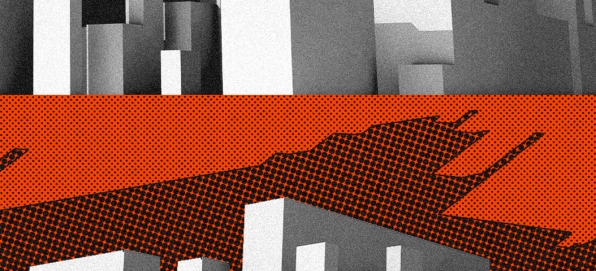
The people left behind
For every Lawrenceville or Tremont, a newly hip neighborhood in Cleveland, there are many where revival has only the faintest chance, if it even has one at all. Mallach measures revival or gentrification as an increase in neighborhood median household income and median home value, both by at least 25% greater than the citywide average. In Pittsburgh, only eight of the city’s more than 100 census tracts reflect those statistics, and in just two of them, the black population is over 30%. Older cities in the U.S., Mallach writes, maintain a presence of large areas of concentrated, persistent, and largely black poverty, and these neighborhoods are as distinct and important as those that are experiencing gentrification. The difference is they’re often overlooked, and instead of reviving, they’re suffering.
“From one legacy city to the next, as some areas gentrify, many other neighborhoods, including many that were pretty solid, relatively stable working-class or middle-class neighborhoods until fairly recently, are falling off a social and economic cliff,” Mallach write. “More often than not, the hardest-hit neighborhoods are disproportionately African-American.”
Pittsburgh’s Hill District is one of them. Up until the 1950s, the neighborhood was a vibrant center of black culture in the city, and the home to small businesses and a thriving jazz scene. But in 1956, the city made the executive decision to tear down some 1,300 structures (and with it, displace 1,500 families, the majority of them black) to build an arena and add parking. The new construction cut the remaining residents off from the rest of the city around it, and slowly, economic activity dried up and the population shrunk; the neighborhood lost 71% of its residents between 1950 and 1990. Traversing the neighborhood now, vacant lots and abandoned buildings dominate the landscape. Revitalization efforts are slow to materialize, and those efforts that have been made (like the buying up of vacant properties by a redevelopment association), have not adequately sourced community input.
In long-distressed American cities like Pittsburgh and Baltimore, gentrification is not the harbinger of displacement that it often is in thriving cities like New York and San Francisco. In fact, it’s often the reverse: The influx of younger, wealthier residents to neighborhoods swiftly brings basic benefits that have long been lacking, like good schools and quality public spaces. And “over and above the direct benefits to neighborhoods, financially and economically stressed cities benefit from a more economically diverse population and higher tax revenues, which in turn enhance their ability to maintain their physical environment and provide better public services,” Mallach writes.
Poorer, majority-black neighborhoods not only do not receive the spillover benefits of these legacy cities’ gentle strand of revival. They also are locked out of the benefits and services that money from those gentrifying areas supplies to the cities, and their residents’ voices are too often shut out of discussions around their neighborhood’s future. Why that is forms the central tenet of Mallach’s book.
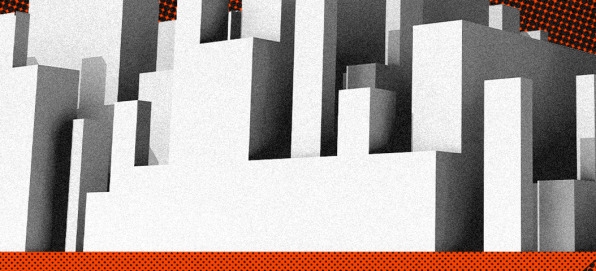
A history of disinvestment
When black families first arrived in northern legacy cities like Pittsburgh and Detroit, they were, due to local government policies, largely confined to discrete neighborhoods. Up until after World War II, “If you were black in Detroit, there was, for all practical purposes, only one neighborhood where you could live, whether you were a janitor or a doctor,” Mallach says. “So there was an incredible density of population and incredible economic diversity, and because of that, there was incredible commercial activity.”
Many factors around the middle of the century broke these neighborhoods apart. Urban renewal–which often entailed razing historically black urban neighborhoods to make way for new development–and the construction of the interstate highway program displaced around 1 million families, half of them black, and that same interstate highway system ferried white families out of cities and into the suburbs. More affluent black families moved into the homes that white flight left vacant in other neighborhoods, and poorer families stayed behind. As economic resources dried up, the lights went out in the previously bustling black neighborhoods. And because the urban policies at the time (and arguably, still now) were heavily inflected by race, financial and social support did not materialize.
“In contrast to the bustling, vibrant streets of the mid-century African-American neighborhoods depicted by so many writers . . . the most powerful visual impression many longtime ghetto areas make today is one of sheer emptiness,” Mallach writes. These areas that have historically been home to poor black people today are largely vacant; North City St. Louis, for instance, now has only 6,000 residents, when in 1970 there were 37,000. This sharp population decline has pulled investment away from local schools and public transit. Residents face steep, often insurmountable barriers to both physical and economic mobility. Whereas in historically white neighborhoods like Lawrenceville, empty lots or vacant buildings may spell opportunity to newcomers or developers, in historically poor black neighborhoods, they spell blight and a history of disinvestment–one that is unlikely to change unless the cities themselves decide to change it.
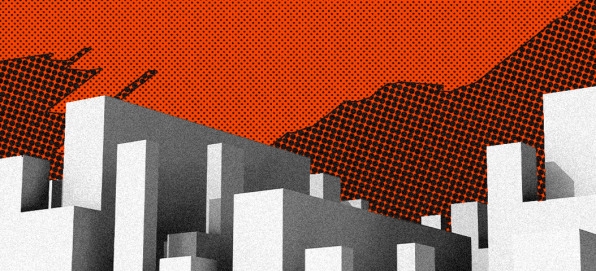
A more equitable way forward
Mallach is a big believer in cities. “Cities evolve organically,” he says. “Obviously, you can do things that force them to change–urban renewal and the construction of highways in the ’50s and ’60s changed cities–but most of the times, when people try to change cities deliberately based on some kind of specific theory, they end up making things worse.” The overlapping forces of urban renewal and highway development gutted cities and fundamentally changed their architecture to the extent that highways now divide and pollute major urban areas, whose downtowns are all but indistinguishable.
And they seem not to have learned. “People are waiting for a Marshall Plan for cities,” Mallach says. To yank their cities out of distress and poverty, policy makers in post-industrial cities like Baltimore and Camden, New Jersey, are leaning heavily on sweeping, top-down economic strategies in the hopes that they’ll effect change. New Jersey, for instance, has funneled $1.2 billion in tax incentives to companies willing to relocate to Camden from the surrounding suburbs. Camden, one of the most distressed metro areas in the U.S., certainly needs the help, but the cost of the tax incentive program is around $400,000 per job that is relocated, and because the offices are just moving a short distance, it’s likely that the same workers will retain their roles, just in a new city. Camden gets no tax revenue from the initiative, nor does the plan do anything to help employ the roughly 31,000 poor, unemployed residents of the city between the ages of 16 and 34. What would, Mallach writes, is an investment of $10,000 per person in services and support to connect them with meaningful, stable, and reasonably well-paying work. That type of initiative would total just around $31 million–a fraction of the cost the state is spending on its useless tax incentive program.
It’s this kind of misallocation of resources, Mallach says, that is leaving poor black neighborhoods in the dust, and that legacy cities need to correct. Instead of Baltimore spending $700 million to construct new stadiums for the Orioles and Ravens, and another $900 million on a new convention center hotel (stadiums and convention centers do very little to lift a city’s poorest residents out of poverty), the city could expand services for low-income or unemployed residents. “Assuming you wanted to train and place 5,000 of Baltimore’s unemployed in stable employment each year, it would cost an additional $45 million a year,” Mallach writes. That amount would go down sharply after several years as the pool of unemployed workers shrinks.
Furthermore, it only costs $1,000 or so to transform a vacant lot in a city’s stressed neighborhood into a usable green space, and just a little more to turn the streetlights back on to make the neighborhood walkable and safe at night–a struggle Detroit only recently won. The other key to helping these distressed neighborhoods, Mallach says, will be increasing the pool of housing subsidy money available at the federal level. While cities do not have jurisdiction over the federal budget, they could work harder to advocate for more money to provide low-income residents with stable housing–the essential base that would allow these other solutions to stick.
Mallach is careful to stress that most of these solutions can and should result from cities thinking more humanely about how they spend their resources. “There is no grandiose dramatic fix,” he says. “It’s about doing stuff that we know how to do, and using money that we have to make basic changes in the day-to-day lives that people live.” And doing so, he says, will involve correcting the fundamental issue he brought up at the beginning of the book: Cities, especially those reviving legacy cities, need to stop ignoring their poor residents of color, and instead listen to their needs.
(27)

